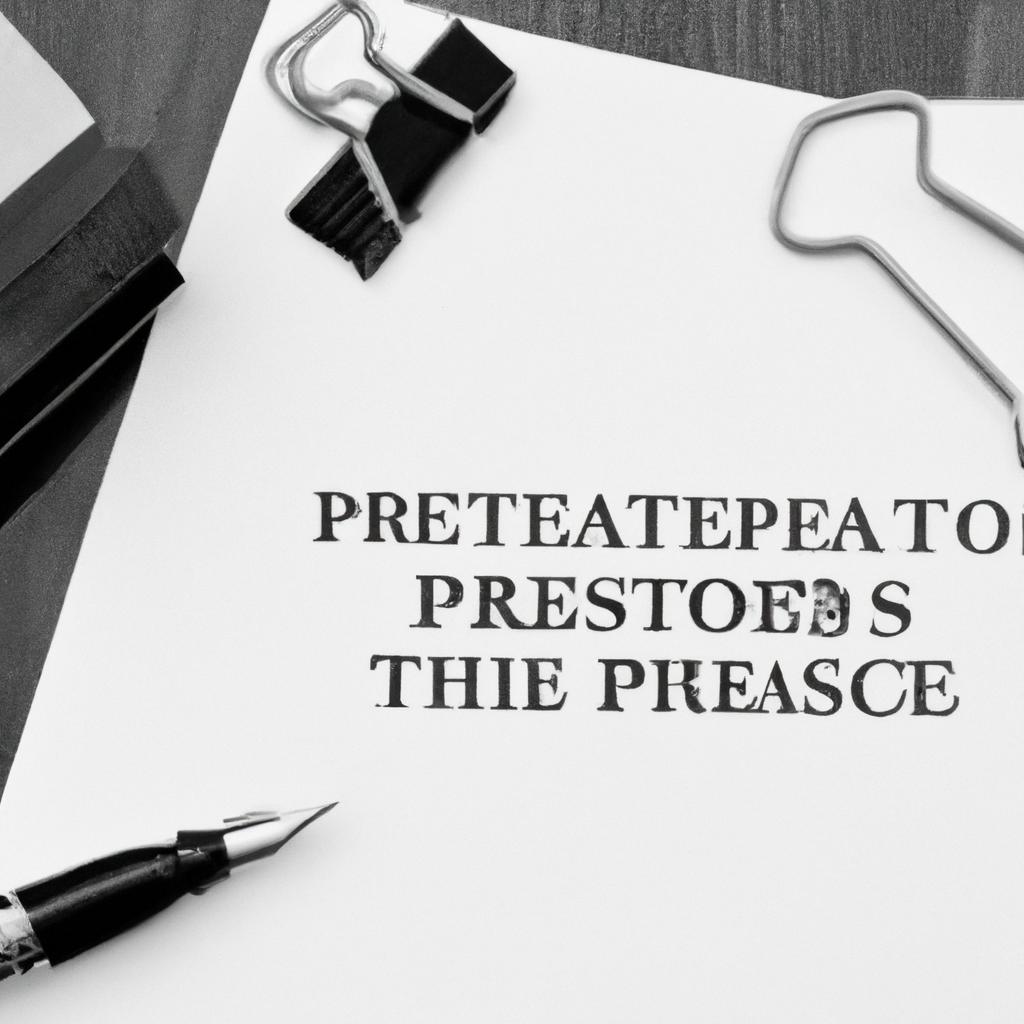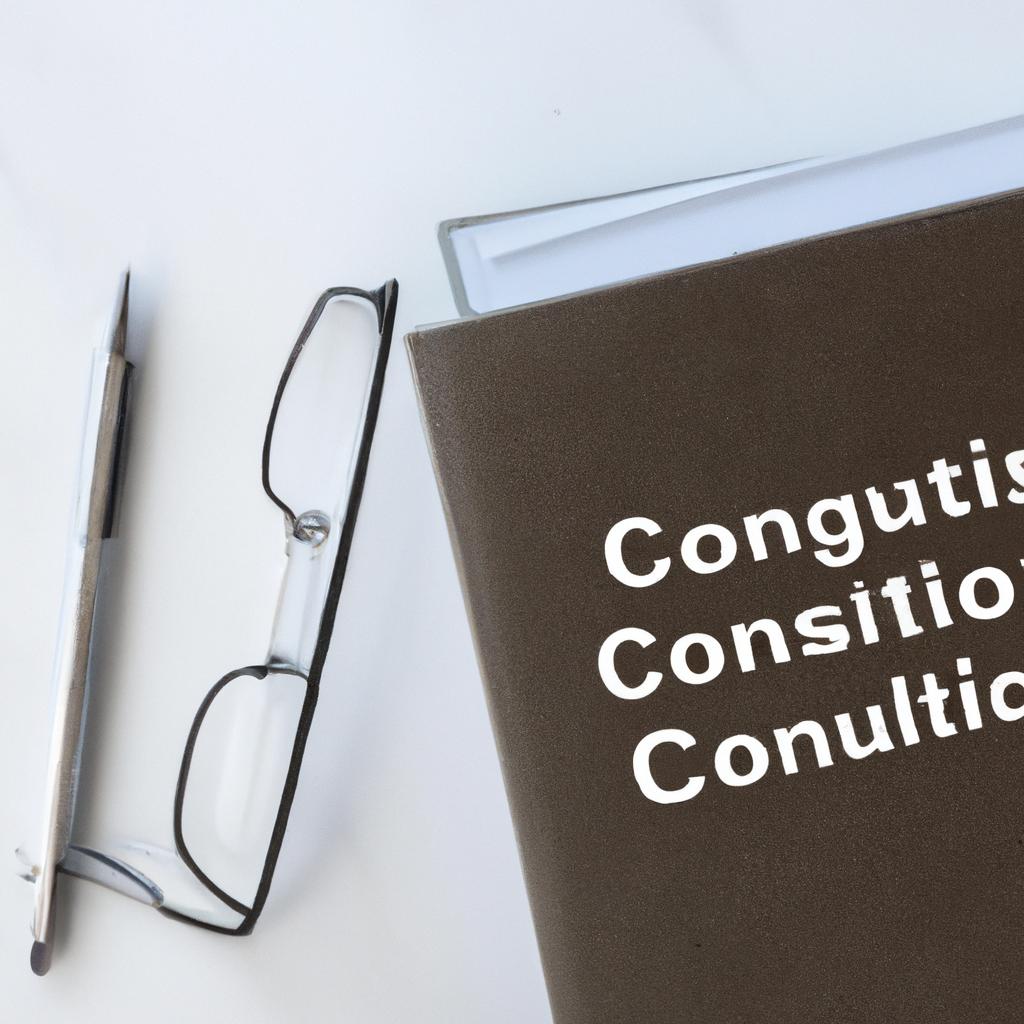As seasoned legal practitioners at Morgan Legal Group, located in the bustling metropolis of New York City, we understand the importance of obtaining a deed to a property. Whether you are navigating the complexities of estate planning, probate proceedings, or establishing trusts, securing a deed is a crucial step in transferring property ownership. In this article, we will guide you through the intricacies of obtaining a deed to a property, offering valuable insights and expert advice to ensure a seamless and legally sound process. Let us help you navigate the legal terrain with confidence and clarity.
Acquiring Legal Title through Deeds: Understanding the Basics
When it comes to acquiring legal title to a property, understanding the basics of deeds is crucial. A deed is a legal document that transfers ownership of a property from one party to another. There are several types of deeds, each serving a different purpose and carrying different rights and obligations. Here are some key points to consider when acquiring a deed to a property:
- Types of Deeds: There are different types of deeds, including warranty deeds, quitclaim deeds, and special warranty deeds. Each type of deed offers different levels of protection to the buyer, so it is essential to choose the right type of deed for your situation.
- Recording the Deed: Once the deed is signed, it must be recorded with the local county recorder’s office. Recording the deed provides public notice of the transfer of ownership and protects the buyer’s interest in the property.

Navigating the Process: Steps to Obtain a Deed to a Property
To obtain a deed to a property, there are several important steps that must be taken to ensure a smooth and legally-binding process. The first step is to conduct a title search to verify ownership and any existing liens or encumbrances on the property. This helps in identifying any potential issues that may need to be resolved before transferring the deed.
Once the title search is completed and any issues are addressed, the next step is to draft a deed document that clearly outlines the transfer of ownership from the current owner to the new owner. This document must be signed and notarized by both parties involved in the transfer. Finally, the deed must be officially recorded with the appropriate government office, such as the county clerk’s office, to make the transfer of ownership official and legally recognized. By following these steps and working with experienced professionals, such as the team at Morgan Legal Group in New York City, obtaining a deed to a property can be a straightforward and successful process.
| Step 1: | Conduct a title search |
| Step 2: | Draft a deed document |
| Step 3: | Sign and notarize the deed |
| Step 4: | Officially record the deed |

Seeking Professional Guidance: The Importance of Consulting with Real Estate Attorneys
When it comes to obtaining a deed to a property, seeking professional guidance from a real estate attorney is paramount. Real estate transactions can be complex, and having a knowledgeable attorney by your side can help ensure that the process goes smoothly and that your rights are protected. A deed is a legal document that transfers ownership of a property from one party to another, and it is crucial to have all the necessary paperwork in order to avoid any future disputes.
Real estate attorneys have the expertise to navigate the intricacies of property law and can provide valuable guidance throughout the deed transfer process. They can help you understand the legal implications of the deed, ensure that all necessary documents are properly prepared and filed, and address any potential issues that may arise. By consulting with a real estate attorney, you can rest assured that your deed transfer is handled with care and attention to detail.

Ensuring Proper Transfer of Ownership: Best Practices for Executing Deeds
When it comes to transferring ownership of a property, executing a deed is a crucial step that must be done with precision. To ensure a smooth and proper transfer of ownership, it is important to follow best practices when it comes to executing deeds.
One key best practice is to clearly identify the parties involved in the transaction and make sure that all necessary information is included in the deed. This includes the names of the grantor and grantee, as well as a complete legal description of the property being transferred. Additionally, it is important to use the correct legal language and terminology in the deed to avoid any confusion or disputes down the line. Finally, it is essential to have the deed properly signed, witnessed, and notarized to ensure its validity and enforceability.
Q&A
Q: What is a deed and why is it important?
A: A deed is a legal document that proves ownership of a property. It is crucial for establishing ownership rights and for transferring ownership to another party.
Q: How can I obtain a copy of a deed to my property?
A: You can obtain a copy of a deed to your property by visiting the county clerk’s office where the property is located. You may need to pay a small fee to obtain a copy of the deed.
Q: Can I get a copy of a deed online?
A: Some counties offer online access to property records, including deeds. You can check with the county clerk’s office to see if this service is available in your area.
Q: How do I transfer a deed to a property?
A: To transfer a deed to a property, you will need to prepare a new deed that includes the names of the current owner and the new owner, as well as a legal description of the property. The new deed must be signed and notarized by both parties and then filed with the county clerk’s office.
Q: What should I do if I lose the deed to my property?
A: If you lose the deed to your property, you can obtain a copy of the deed from the county clerk’s office. It is important to keep a copy of the deed in a safe place to avoid losing it in the future.
Final Thoughts
Congratulations! You are now armed with the knowledge to navigate the process of obtaining a deed to a property. Remember, patience and perseverance are key when dealing with legal matters. Whether you are buying, inheriting, or receiving a property as a gift, understanding the steps involved in obtaining a deed will help you protect your ownership rights and secure your piece of the real estate pie. Good luck on your journey to property ownership!
 As a homeowner, having a deed to your property is crucial as it serves as legal proof of ownership. Whether you have purchased a new property or have inherited one, getting a deed is a necessary step in the process of becoming a homeowner. In this article, we will guide you through the process of obtaining a deed to a property, including the different types of deeds, their purpose, and the steps to take to get one. So let’s dive in!
As a homeowner, having a deed to your property is crucial as it serves as legal proof of ownership. Whether you have purchased a new property or have inherited one, getting a deed is a necessary step in the process of becoming a homeowner. In this article, we will guide you through the process of obtaining a deed to a property, including the different types of deeds, their purpose, and the steps to take to get one. So let’s dive in!
Types of property deeds
Before we delve into the details of obtaining a deed, it’s essential to understand the different types of property deeds available. The type of deed you receive will depend on the circumstances under which you acquire the property. The most common types of deeds are:
1. General Warranty Deed – A general warranty deed guarantees that the property is free from any defects, liens, or other legal claims that could threaten the buyer’s title.
2. Special Warranty Deed – This type of deed guarantees that the seller has not incurred any defects on the property during their ownership. It offers less protection than a general warranty deed but is still considered a valid form of ownership transfer.
3. Quitclaim Deed – A quitclaim deed is used when transferring ownership to someone else without any guarantees of the title’s validity. This type of deed is commonly used for divorce, inheritance, or transferring ownership between family members.
4. Bargain and Sale Deed – This type of deed offers no guarantees of the property’s title, but it does imply that the seller holds ownership and has the right to transfer it. This type of deed is commonly used for tax sales or foreclosures.
Obtaining a deed to a property
Now that you understand the different types of deeds, the next step is to determine the type of deed you need and the steps to take to obtain it. Here’s a step-by-step guide on how to get a deed to a property:
1. Gather necessary documents – Depending on the type of deed you need, you may be required to present various documents such as a property survey, title insurance, proof of property taxes, and mortgage documents. It’s crucial to have these ready before applying for a deed to avoid any delays.
2. Check the property’s title – It’s essential to perform a title search before obtaining a deed to ensure there are no liens, unpaid taxes, or other claims against the property. If any issues arise during the search, they must be resolved before transferring ownership.
3. Obtain a deed form – You can find a standard deed form online or obtain one from your local county recorder’s office. Ensure that the form contains all the necessary information such as the names and addresses of both parties, legal description of the property, and the type of deed being used.
4. Fill out the form – Once you have the deed form, fill it out accurately and completely. Any errors or omissions could invalidate the form, leading to delays or legal issues in the future. It’s crucial to have both parties sign the form in the presence of a notary public for it to be considered legally binding.
5. File the deed with the county recorder’s office – Once the deed is signed and notarized, it must be filed with the county recorder’s office in the county where the property is located. There will be a filing fee, which may vary depending on your location. Once the deed is filed, it is considered official, and you will receive a copy for your records.
Benefits and practical tips for obtaining a deed
Obtaining a deed is a crucial step in the homeownership process, and there are a few benefits and practical tips to keep in mind when going through this process.
1. A deed serves as legal proof of ownership – Having a deed to your property ensures that you have legal rights to the property and can protect you from any future disputes or claims.
2. A clear title can increase property value – A clear title means that the property has no liens or legal issues, making it more attractive to potential buyers and increasing its value.
3. Work with a reputable title company – When dealing with property deeds, it’s always recommended to work with a reputable title company or attorney to ensure all legal requirements are met and to avoid any future issues.
4. Keep copies of all documents – It’s crucial to keep copies of all the necessary documents and the deed itself for your records. This will serve as evidence of your ownership in case of any future disputes.
Case study: First-hand experience
To gain a better understanding of the process of obtaining a deed, we spoke to John, who recently inherited a property from his late grandfather. Here’s his first-hand experience:
“When I found out that my grandfather had left me a property in his will, I was both excited and overwhelmed. As a first-time homeowner, I wasn’t familiar with the process of getting a deed. After doing some research and consulting with a title company, I was able to gather all the necessary documents and fill out the deed form accurately.
The process of filing the form with the county recorder’s office was straightforward, and within a few days, I received a copy of the deed in my name. I learned the importance of performing a title search, and I’m glad I didn’t skip that step as it revealed an unpaid lien that needed to be resolved before I could obtain the deed. Overall, the process was smooth, and I learned a lot about the importance of having a deed in my name.”
In conclusion, obtaining a deed to a property is a crucial step in becoming a homeowner. It’s essential to understand the different types of deeds available and to follow the necessary steps to ensure a smooth and legally-binding transfer of ownership. Working with a reputable title company or attorney can also provide peace of mind and ensure all legal requirements are met. We hope this article has provided valuable information to guide you through the process of obtaining a property deed. Happy homeownership!

